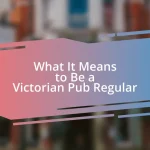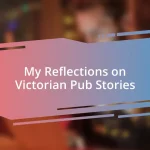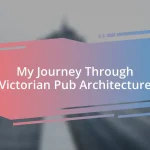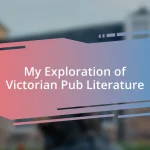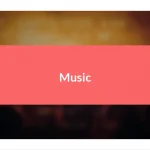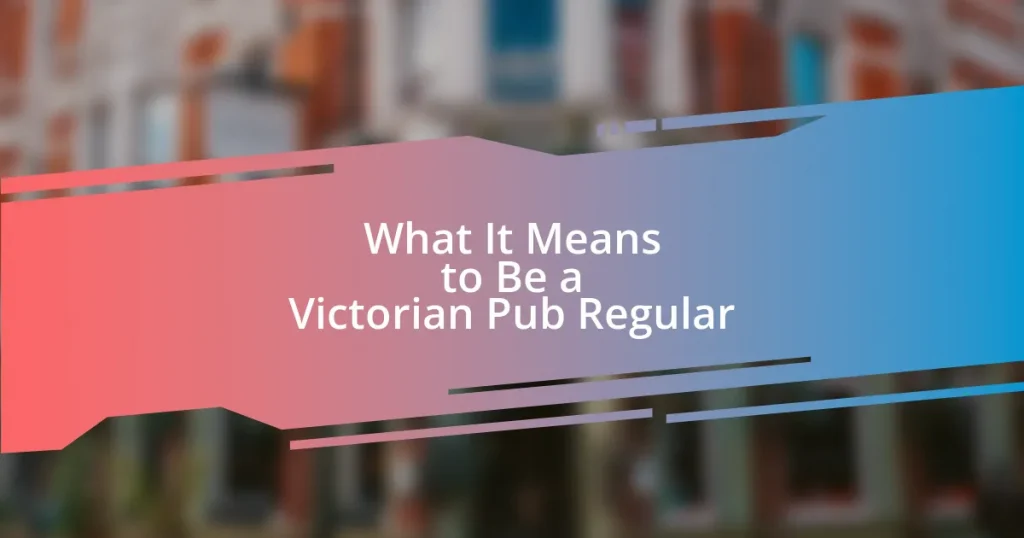Key takeaways:
- First memorable cultural festival experience sparked a deep appreciation for community unity through culture.
- Effective festival planning requires a well-structured timeline with buffer time and task prioritization for smooth execution.
- Engaging the community through local artists, storytelling, and volunteer participation fosters a sense of ownership and connection.
- Successful promotion leverages social media, community influencers, and well-timed campaigns to build excitement and attendance.

My journey in cultural festivals
Reflecting on my journey in cultural festivals, I can vividly recall my first experience at a local celebration. The vibrant colors, the rhythmic music, and the smell of delicious food instantly transported me into a different world. I remember thinking, “How can such a small community create something so magical?” That moment sparked something inside me—a deep appreciation for how culture can unite people.
As I delved deeper into organizing these events, I faced challenges that were both daunting and exhilarating. One year, during a particularly hectic festival, we faced a sudden downpour. I feared that we’d lose the crowd, but instead, people danced in the rain, embracing the unexpected. It was a beautiful reminder that sometimes, the most memorable experiences stem from the unpredictable aspects of life.
Then there was the time I worked alongside artisans to showcase traditional crafts. Their passion was contagious, and it made me wonder—what stories lay behind each handmade item? Engaging with these creators not only enriched the festival but also deepened my understanding of heritage and community. I felt honored to be a part of something larger than myself, a celebration that honored the past while inviting others to participate in the unfolding story.

Planning the festival timeline
When it comes to planning the festival timeline, I’ve learned that a well-structured schedule is essential to the event’s success. One year, I underestimated the time needed to set up the booths properly, leading to a chaotic start. It’s crucial to allocate adequate time for every aspect—from vendor setup to performer rehearsals—while also considering unexpected hiccups that may arise.
Another key aspect of the timeline is prioritizing tasks to ensure everything flows smoothly. I remember pacing myself during a festival when the team was overwhelmed by last-minute changes. By breaking down the tasks into manageable chunks and delegating responsibilities, we turned a potentially stressful situation into a collaborative effort. This teamwork not only eased the pressure but also fostered a sense of camaraderie among us.
As I reflect on my experiences, I recognize the importance of including buffer time within the timeline. One particularly busy day, we faced a delay with the sound equipment. Thankfully, we had built some extra time into our schedule, allowing us to maintain the event’s momentum without losing the excitement of the crowd. This flexibility can turn a stressful moment into an opportunity for spontaneous creativity.
| Event Stage | Time Allocation |
|---|---|
| Setup | 3 hours |
| Vendor Arrivals | 1 hour |
| Performer Rehearsals | 2 hours |
| Opening Ceremony | 30 mins |
| Buffer Time | 1 hour |

Engaging the community effectively
To engage the community effectively, it’s essential to create a sense of ownership among the participants. I recall a time when we invited locals to share their own stories and experiences, allowing them to feel represented in the festival narrative. This interaction not only fostered connection but also revitalized old traditions that some felt might fade away. I’ve seen firsthand that when people see themselves reflected in the festival, their enthusiasm often creates an energy that uplifts the entire event.
Here are some strategies that worked well for me:
- Involve local artists and performers: Their unique contributions not only highlight the community’s talent but also deepen cultural appreciation.
- Conduct workshops: Engaging residents in hands-on activities helps them connect with their heritage while encouraging interpersonal relationships.
- Share stories: Create platforms for community members to narrate their experiences, fostering connection and a shared sense of history.
- Encourage volunteer participation: By giving locals a role in planning and executing the festival, they develop a vested interest in its success.
- Utilize social media: Promote discussions and solicit feedback, making everyone feel part of the planning process and weaving a stronger fabric of community involvement.
Investing time in these methods can elevate the overall festival experience, transforming it into a collective celebration rather than just an event.

Setting up partnerships and sponsorships
Setting up partnerships and sponsorships can feel like a daunting task, but it doesn’t have to be. I remember when I approached a local business for support; I was genuinely nervous. However, to my surprise, they were thrilled to collaborate because they saw the mutual benefit. Building relationships is all about demonstrating how the partnership can enhance their visibility while contributing to the festival’s success.
While drafting sponsorship proposals, I found that personalizing each pitch made a significant impact. I shared my vision with potential sponsors, highlighting how their brand values aligned with the festival’s mission. For instance, one year, I partnered with a local organic farm. By tying their commitment to sustainability into the festival’s educational segments, we created a win-win situation. This not only attracted eco-conscious attendees but also showcased the farm’s dedication to the community.
Open communication is crucial in maintaining these partnerships throughout the festival process. I discovered that regular updates and check-ins with sponsors fostered a sense of teamwork. Encouraging their input on booth design or promotional activities made them feel valued and invested in the event’s success. And let’s be honest—who doesn’t appreciate being treated as a partner rather than just a financial backer? It’s these small but impactful actions that create lasting relationships and pave the way for future collaborations.

Promoting the festival successfully
Promoting a festival successfully requires an understanding of where to focus your efforts. I’ll never forget the first time I tapped into social media for promotion. It felt like opening a door to a whole new world! Sharing behind-the-scenes content, countdowns, and artist spotlights not only generated excitement but also created a buzz that I hadn’t anticipated. Engaging followers through interactive polls about festival activities made them feel valued, and their enthusiastic responses often inspired our planning.
Another strategy that proved valuable was harnessing the power of community influencers. I remember teaming up with a local blogger who had a genuine love for cultural events. When they shared their excitement about our festival, the reach was tremendous. It turned out that personal endorsements resonate deeply. People trust recommendations from those they admire, and seeing familiar faces promoting the festival brought in attendees who may have otherwise overlooked it.
Lastly, I learned that timing your promotions is essential. For instance, launching the promotional campaign three months prior allowed us to build momentum gradually. During that lead time, I organized teaser events that not only hinted at the festival activities but also kept our community engaged. Isn’t it amazing how a little anticipation can create such vibrant energy? By continually drumming up interest and adjusting our strategy based on feedback, we not only met expectations but often exceeded them, turning the festival into an event people marked on their calendars with excitement.

Evaluating the festival outcomes
Evaluating the outcomes of a festival involves not only the attendance numbers but also the overall experience shared by participants. I’ve found that gathering feedback through post-event surveys really helps shed light on the festival’s impact. One year, after a particularly vibrant celebration of cultural diversity, I was stunned to see how many attendees highlighted their newfound appreciation for the various cultures represented. The insights I received ignited a passion in me to ensure these voices were not just heard but actively shaped future events.
I recall a moment after a festival when an attendee approached me to share how the workshops had shifted their perspective on art. Hearing these personal stories rather than just receiving statistical data was a game-changer. It reminded me that successful festivals foster emotional connections, and those often can’t be quantified. Could we ever put a price on someone discovering a part of their cultural identity?
Balancing quantitative and qualitative data is essential for a comprehensive evaluation. In my experience, while assessing ticket sales and vendor success is important, diving deep into attendee testimonials reveals the heart of the festival. For example, one vendor told me that spiritual discussions during the event led to unplanned collaborations later. It’s those moments of connection that tell me our efforts truly resonated and created a lasting legacy in the community.

